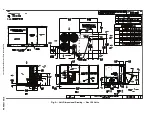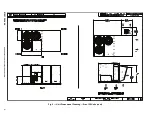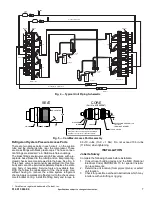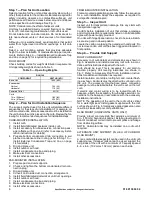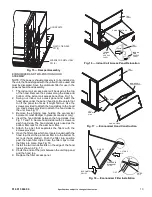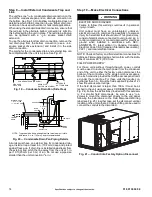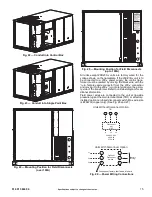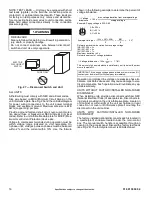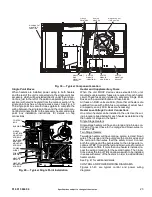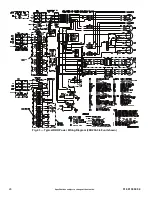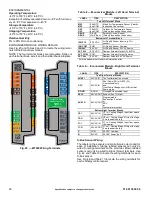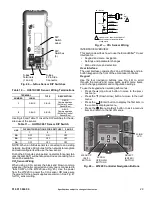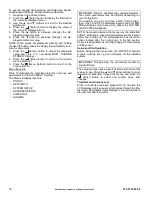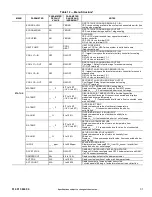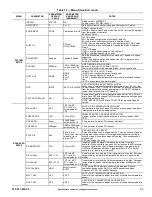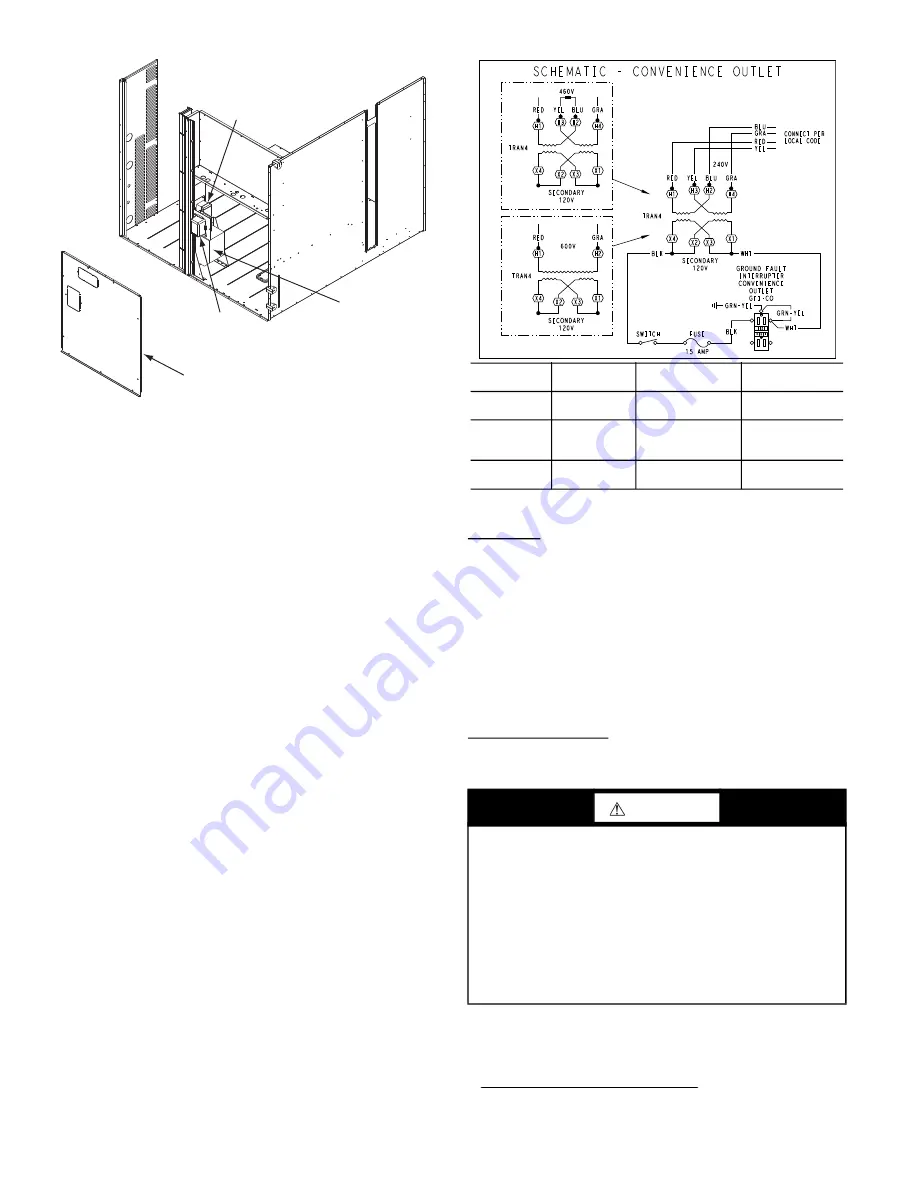
18
Specifications subject to change without notice.
516 01 3604 04
Fig. 30 — Convenience Outlet Location
Unit-Powered Convenience Outlet
A unit-mounted transformer is factory-installed to step down
the main power supply voltage to the unit to 115-v at the du
-
plex receptacle. This option also includes a manual switch
with fuse, located in a utility box and mounted on a bracket
behind the convenience outlet; access is through the unit’s
control box access panel. See Fig. 30.
The primary leads to the convenience outlet transformer are
not factory-connected. Selection of primary power source is
a customer option. If local codes permit, the transformer pri
-
mary leads can be connected at the line-side terminals on
the unit-mounted non-fused disconnect switch; this will pro
-
vide service power to the unit when the unit disconnect
switch is open. Other connection methods will result in the
convenience outlet circuit being de-energized when the unit
disconnect switch is open. See Fig. 31. On a unit without a
unit-mounted disconnect, connect the source leads to the
main terminal block (TB1).
If the convenience outlet transformer is connected to the
line side of a field disconnect, the conduit provided with the
unit must be used to protect the wire as they are routed from
the transformer to the field disconnect. The end of the con
-
duit with the straight connector attaches to the field discon
-
nect. The other end does not need to connect to the trans
-
former; however, the conduit must be routed so that all wir
-
ing is either in the conduit or behind the access panel.
If the convenience outlet transformer is connected to the
line side of the factory disconnect option, route the wires
through the web bushing located on the bottom of the dis
-
connect box. For the load side wiring to the factory option
disconnect, route the wires through the hole on the right
side of the disconnect. Be sure to create a drip loop at least
6-in. long.
Fig. 31 — Powered Convenience Outlet Wiring
Duty Cycle
The unit-powered convenience outlet has a duty cycle lim
-
itation. The transformer is intended to provide power on an
intermittent basis for service tools, lamps, etc; it is not in
-
tended to provide 15 amps loading for continuous duty
loads (such as electric heaters for overnight use). Observe
a 50% limit on circuit loading above 8 amps. (i.e., limit loads
exceeding 8-amps to 30 minutes of operation every hour).
Test the GFCI receptacle by pressing the TEST button on
the face of the receptacle to trip and open the receptacle.
Check for proper grounding wires and power line phasing if
the GFCI receptacle does not trip as required. Press the
RESET button to clear the tripped condition.
Fuse On Power Type
The factory fuse is a Bussman “Fusetron”
1
T-15,
non
-
renewable screw-in (Edison base) type plug fuse.
CONVENIENCE
OUTLET
GFCI
PWD-CO
FUSE
SWITCH
PWD-CO
TRANSFORMER
DISCONNECT
ACCESS PANEL
1. Bussman and Fusetron are trademarks of Cooper Technologies
Company.
WARNING
ELECTRICAL OPERATION HAZARD
Failure to follow this warning could result in personal
injury or death.
Using unit-mounted convenience outlets: Units with unit-
mounted convenience outlet circuits will often require
that two disconnects be opened to de-energize all power
to the unit. Treat all units as electrically energized until
the convenience outlet power is also checked and de-
energization is confirmed. Observe National Electrical
Code Article 210, Branch Circuits, for use of
convenience outlets.
UNIT
VOLTAGE
CONNECT
AS
PRIMARY
CONNECTIONS
TRANSFORMER
TERMINALS
208, 230
240
L1: RED + YEL
L2: BLU + GRA
H1 + H3
H2 + H4
460
480
L1: RED
Splice BLU + YEL
L2: GRA
H1
H2 + H3
H4
575
600
L1: RED
L2: GRA
H1
H2

